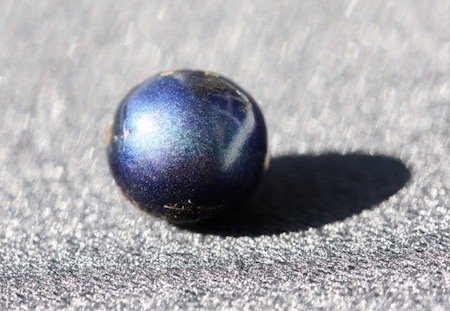This is one of the most vibrant colours produced in nature. It boasts a blue-purple, metallic-like finish that glistens in the sun like a rare gem. Pollia condensata, commonly known as the marble berry, grows in forested regions of Africa: Ethiopia, Angola, Mozambique and Ghana. The colour is created by a complex structure of cells that reflect wavelengths of light through its many layers. According to the AskNature website, "What makes Pollia’s coloration even more striking is the variation in layer thickness from cell to cell. Each cell reflects light differently, resulting in a pixelated or pointillist effect where different shades of blue, green, and purple appear across the surface of the fruit. This is why the fruit’s colour appears vibrant, multi-toned, and almost alive with shifting hues depending on the angle of observation."
Like peacocks, scarab beetles, and certain butterflies, this form of "structural colour" results in iridescent surfaces. As beautiful as they are, Marble Berries are not edible. However, it seems birds are equally fascinated by the tiny, sparkling orbs and use them to decorate their nests.

